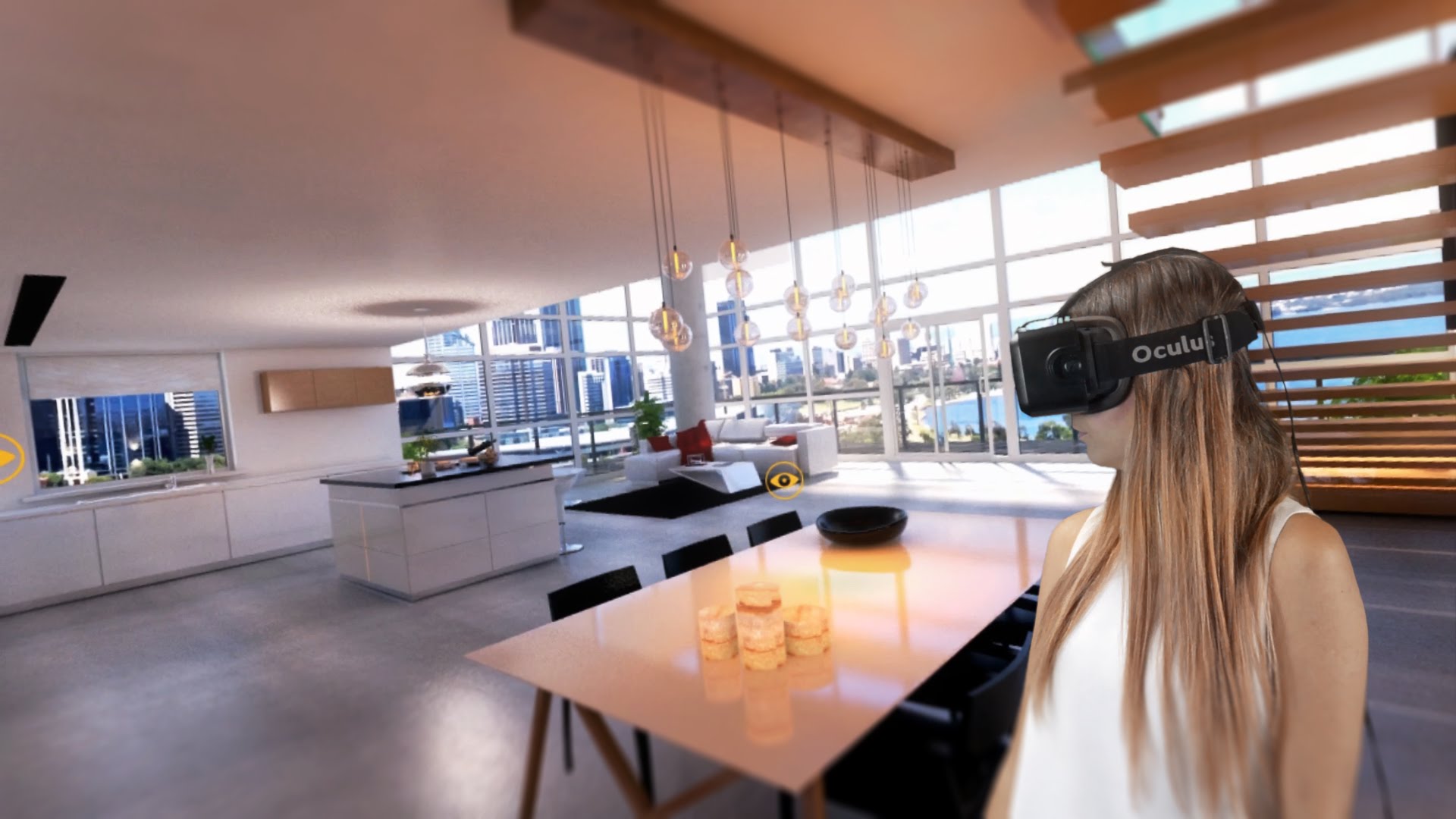Currently, customer experience has emerged as an extremely important aspect that affects brand loyalty and differentiation more strongly than at any other time. Companies are now changing the methods in which they introduce, display, and cater to their goods in response to the increasing customer demands.
Virtual Reality (VR) has found its place in the transition and will completely change the interaction of customers with a brand. The VR customer experience marries immersion and interactivity to produce a better-informed and more assured customer at every touchpoint.
How Is Virtual Reality Changing the Customer Experience Framework?
Virtual reality is at the intersection of engagement, education, and service. Virtual reality delivers settings in which customers engage with products or services rather than reading about them. This redefines value communication and interest conversion into action.
Defining Virtual Reality in the Context of Customer Engagement
With customer interaction, VR is more than amusement. It’s a three-dimensional interface through which users are able to navigate realistic models of products, settings, or scenarios. From strolling through a hotel room and controlling virtual machinery to seeing furniture within a digital replica of their house, customers achieve spatial and experiential understanding that static images are unable to provide.
Core Technologies Behind Immersive Experiences
The roots of this evolution are based on real-time 3D rendering, motion tracking, spatial audio, and haptic feedback systems. Collectively, they enable customers to feel presence, rather than merely view information. Cloud-streamed VR, web-based browsers, and integration with e-commerce or CRM systems have made immersive experiences available without the burdensome infrastructure, making it easier to roll out VR in retail experiences across devices.
Redefining Customer Interaction Points
Each customer experience includes moments of discovery, evaluation, and choice. VR transforms each into one of emotional connection and utilitarian awareness. Rather than viewing a product in solitude, the consumer gets to see it in motion.
Virtual Showrooms And Lifelike Product Exploration
Virtual showrooms have become digital extensions of physical retail floors. Visitors can walk through a tailored space, compare models side by side, delve into specifics, and even virtually visualize custom configurations. This strategy bridges the distance between online viewing and physical interaction without diminishing sensory experience.
Interactive Demonstrations Replacing Static Catalogs
A brand innovation/virtual product demos strategy eliminates the constraints of print or video catalogs. In virtual reality, customers may interact with parts, see inside mechanisms, or experience a realistic performance simulation. This engagement provides a useful understanding and constructs greater purchase intent by responding to questions before they’re asked.
Story-Driven Brand Environments Through Immersion
More and more brands find VR to be a convenient way to share stories that link to their situation. No more presentation slides or advertisement videos, but rather the consumers are immersed in a story world where they can experience the brand’s moral character and virtues directly. This emotional connection helps in better remembering the story and in the audience to make real insights into what the brand signifies.
Pre-Purchase Experience
The pre-buy phase usually involves uncertainty. Consumers desire assurance of quality, fit, and usability prior to making a purchase. VR eliminates uncertainty by enabling them to try products virtually.
Simulated Product Exploration for Informed Decisions
With VR simulations, purchasers are able to tour around various models or configurations and see them in their premises. A customer purchasing furniture is able to view how it would look in their room, while an industrial purchaser can view equipment within a real plant floor plan. Such situations build confidence and enable more accurate comparisons between choices.
Building Buyer Confidence Through Virtual Previews
The confidence of the customer is increased when they are fully aware of what they will get. By making use of VR previews, a very similar digital version of the final product can be experienced. Ranging from car interiors to architectural layouts, the capability of previewing the scale, texture, and lighting conditions has a big impact on the purchasing decisions and the satisfaction levels afterward.
Purchase Experience
At the time of purchase, VR can make complicated decision-making easier and clarify configurations or packaged services. It streamlines the buying process with precision and direction.
Visualization Tools Enhancing Purchase Decisions
Buyers see accurate product dimensions, finishes, and usage settings in real time. Visualization tools not only decrease order errors but also enhance customization rates. Retailers and manufacturers enjoy increased engagement and fewer post-purchase changes.
Virtual Consultations Informing Customer Decisions
Guided selling is also supported by VR. The consultant, remote or in-store, can participate with the customer within the same virtual space. They are able to point out product variations, customize configurations, or interactively illustrate use cases. It reinstates the personal touch lost in digital commerce.
Post-Purchase Experience
The customer journey does not immediately end with the completion of payment. The after-buy journey, if well supported, can work as a trust builder, customer loyalty enhancer, and recommendation encourager. VR here is contributing its part in fulfilling these three intentions by providing training, giving introductions, and providing ongoing support.
Virtual Onboarding and Usage Training
VR post-purchase onboarding enables customers to be taught how to utilize a product step by step. Rather than having to refer to manuals or videos, they adhere to guided tours within an interactive setting. For complicated gear or software, this significantly minimizes the learning curve and lessens reliance on external assistance.
Immersive After-Sales Support and Assistance
Virtual reality-based support allows technicians or agents to diagnose and fix problems via collaborative simulations. A customer can emulate a configuration virtually, and the support staff can assist them in real time. This method reduces errors, travel expenses, and downtime, while maintaining customer interaction even after the sale.
Influence Of Virtual Reality On Customer Retention And Perception
Retention is based on satisfaction and emotional bond. VR drives both through evocative experiences and correct answers.
Emotional Bonding with Brands
Immersive experience heightens the emotional bond between brand and customer. Sensory memory that is generated through a significant VR experience tends to linger longer than traditional media viewing. When customers are engaged in the brand’s world, loyalty becomes natural.
Smoothing Interactions Through Behavioral Awareness
Each VR experience creates quantifiable interaction data, ranging from gaze to object selection. These behaviors include learning, layout, messaging, and design choice experimentation, and ultimately a better, more personalized customer experience.
How Do Different Sectors Adopt Virtual Reality Technology in Customer Experience?
VR use is industry-specific, each solving for different pain points with immersive interaction.
Retail and E-Commerce Applications
Retailers apply VR in retail experience to connect online and offline shopping. From virtual trials of clothes to digital replicas of stores, such experiences lower product returns and increase conversion.
Hospitality and Tourism Innovations
Hotels and resorts apply VR to deliver walkthroughs of rooms, event venues, and locations. For tourists, this eliminates uncertainty and enables greater booking confidence.
Real Estate and Automotive Use Cases
Property developers and car manufacturers depend extensively on VR for experiential previews. Customers can view every facet of a property or drive cars without physical presence, enhancing convenience and sales closure rates.
Education and Professional Training Environments
VR is changing the game when it comes to corporate and academic training because it makes it possible for learners to learn in virtual environments. One of the benefits that trainees can get is the opportunity to practice tough and complex tasks in safe environments, which at the same time increases the efficiency of the skill acquisition and brings the costs down considerably.
Practical and Tactical Roadblocks
Just as with every new technology, VR must first be thoughtfully adopted. The achievement would be realized by working out that just-right connection between the creative process and its practicality.
Infrastructure and Investment Barriers
Creation and implementation of VR content both cost money, require specialized knowledge, and require upkeep. Modular systems and scaling platforms now make it affordable to begin small and grow based on quantifiable ROI.
Accessibility, Comfort, and User Adaptation Issues
User comfort, hardware availability, and accessibility are still factors to consider. To mitigate these, most companies integrate VR with web-based 3D viewers or augmented layers, making experiences accessible and practical.
Conclusion
Virtual reality is gradually moving from idea to imperative in today’s customer experience model. It turns product visualization, engagement, and service support into an ongoing, high-value process that enhances decision-making accuracy and customer satisfaction.
At Limina Studios, we create these immersive experiences for businesses in various industries. Our Dubai team constructs virtual showrooms, digital product demonstrations, and interactive environments that deepen brand connection and push the VR customer experience. For firms ready to make a real impact via brand innovation/virtual product demos, we assist in bringing that vision into tangible results.






















